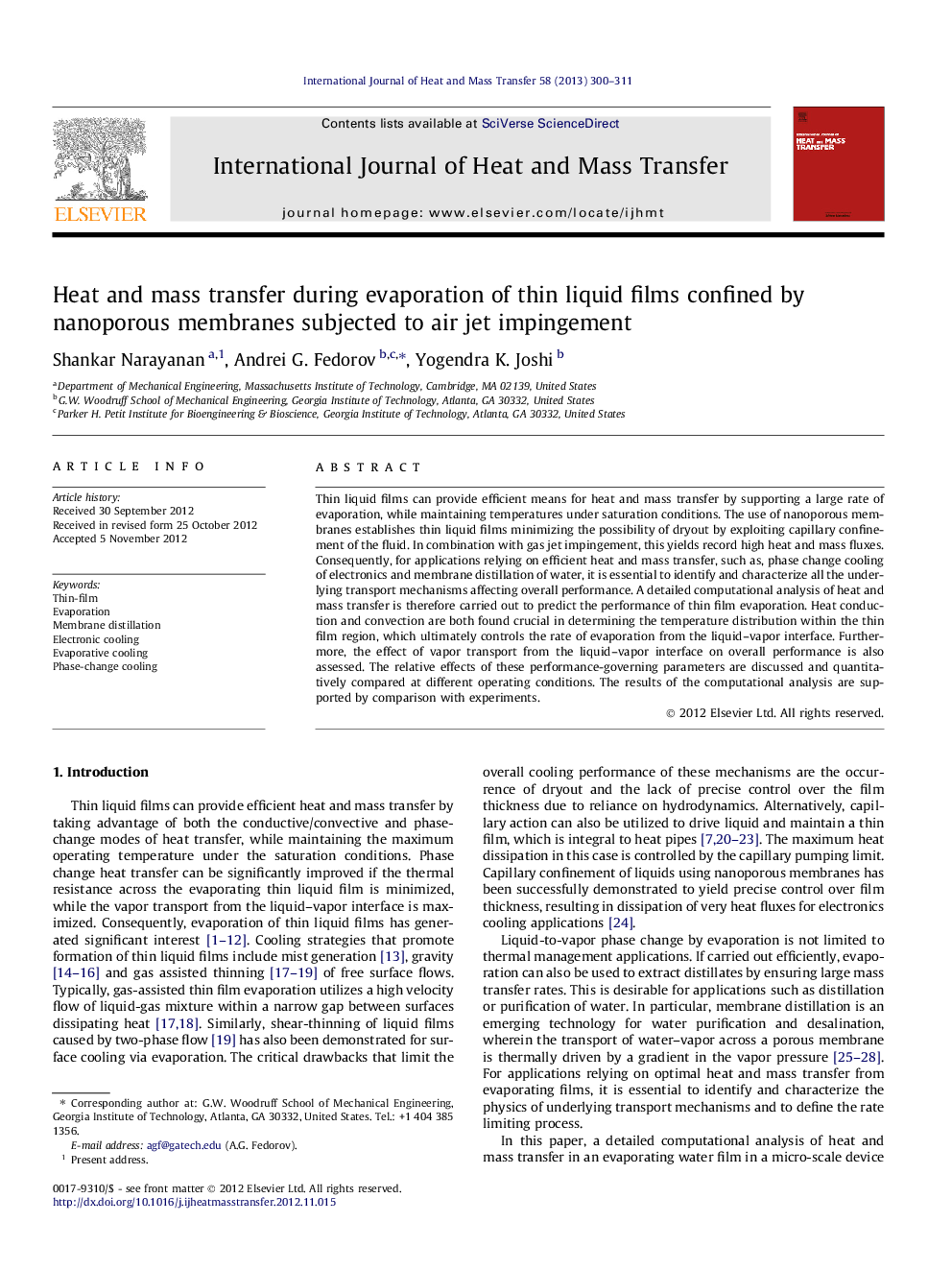| Article ID | Journal | Published Year | Pages | File Type |
|---|---|---|---|---|
| 658446 | International Journal of Heat and Mass Transfer | 2013 | 12 Pages |
Abstract
Thin liquid films can provide efficient means for heat and mass transfer by supporting a large rate of evaporation, while maintaining temperatures under saturation conditions. The use of nanoporous membranes establishes thin liquid films minimizing the possibility of dryout by exploiting capillary confinement of the fluid. In combination with gas jet impingement, this yields record high heat and mass fluxes. Consequently, for applications relying on efficient heat and mass transfer, such as, phase change cooling of electronics and membrane distillation of water, it is essential to identify and characterize all the underlying transport mechanisms affecting overall performance. A detailed computational analysis of heat and mass transfer is therefore carried out to predict the performance of thin film evaporation. Heat conduction and convection are both found crucial in determining the temperature distribution within the thin film region, which ultimately controls the rate of evaporation from the liquid-vapor interface. Furthermore, the effect of vapor transport from the liquid-vapor interface on overall performance is also assessed. The relative effects of these performance-governing parameters are discussed and quantitatively compared at different operating conditions. The results of the computational analysis are supported by comparison with experiments.
Related Topics
Physical Sciences and Engineering
Chemical Engineering
Fluid Flow and Transfer Processes
Authors
Shankar Narayanan, Andrei G. Fedorov, Yogendra K. Joshi,
